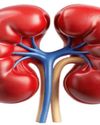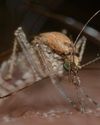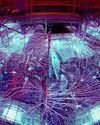AUTISM and The Gut Microbiome
Scientific India
|March - April 2025
Autism is a spectrum disorder of neurodevelopmental organs that affects social interaction, communication problems, and repetitive and restricted behavior among children and grown-up adults.

As per the Lancet Journal report in December 2024, the Global Burden of autism disorder among people presents the most comprehensive estimates and further highlights, mentioning that there is a substantial increase in the prevalence of this disorder compared to the previous forecast. The study estimates that 61.8 million people globally were autistic in 2021, equivalent to 1 in every 127 individuals. This marks a significant increase from prior estimates, which had relied on data sources that likely underestimated autism prevalence. In the following table, illustrations have been made to give estimates of autism disorders among individuals per 100,000.
The burden of autism disorders varies significantly across geographical regions also, reflecting differences in diagnostic awareness, healthcare access, and cultural factors. Among high-income regions, Japan had the highest prevalence, with 1,586.9 per 100,000 people diagnosed with autism disorder. Conversely, Bangladesh had the lowest recorded prevalence globally, at 588.2 per 100,000.
What causes autism?
To explain this disorder, several reports are indicating the reasons like genetic disorders (e.g., fragile X syndrome, Rett syndrome, and tuberous sclerosis), environmental factors (e.g., maternal infection, diabetes, high blood pressure, and older paternal age at conception), brain differences, brain growth disruptions in early development and Preterm birth. However, there are still heated arguments and debates saying that intense research is required to unravel the complexities of this condition.
このストーリーは、Scientific India の March - April 2025 版からのものです。
Magzter GOLD を購読すると、厳選された何千ものプレミアム記事や、10,000 以上の雑誌や新聞にアクセスできます。
すでに購読者ですか? サインイン
Scientific India からのその他のストーリー
Scientific India
Japanese physicists were the first to measure the most tolerant entanglement state, the W state
There are many unusual things that happen in the world of quantum physics.
3 mins
September - October 2025

Scientific India
The Fifth Force: Could It Unlock the Secret of Dark Matter?
What if the universe is powered by a force we've never seen before? For centuries, science has explained nature with four fundamental forces.
3 mins
September - October 2025

Scientific India
A flu test you can chew
As flu season nears in the northern hemisphere, scientists are exploring a surprising new way to detect infection: through taste.
1 mins
September - October 2025

Scientific India
Lab-Grown Kidney Brings Artificial Organ Dream Closer to Reality
In a major leap toward bioengineered organ replacement, scientists have successfully grown human kidney 'assembloids' in the laboratory that mimic key structural and functional features of natural kidneys.
1 min
September - October 2025

Scientific India
Your pumpkin might be hiding a toxic secret
Pumpkins, squash, zucchini, and other members of the gourd family have a surprising trait: they can take up pollutants from the soil and store them in their edible parts.
1 mins
September - October 2025

Scientific India
2025 Nobel Prize in Physics Reveals Quantum Secrets in Superconducting Circuits
The 2025 Nobel Prize in Physics has been awarded to John Clarke, Michel H. Devoret, and John M. Martinis for their pioneering experiments that brought quantum mechanics from the invisible atomic world to the macroscopic scale a system large enough to hold in your hand.
1 mins
September - October 2025

Scientific India
Genomic Evidence Redefines the Evolutionary Age of Mosquitoes
A new genetic analysis has shaken up what we thought we knew about one of humanity's most notorious pests the mosquito.
1 min
September - October 2025

Scientific India
Nobel Prize in Chemistry 2025: Building Molecular Architectures with Room to Breathe
In a scientific breakthrough that bridges molecular design with planetary-scale problems, the 2025 Nobel Prize in Chemistry has been awarded to Susumu Kitagawa, Richard Robson, and Omar Yaghi.
1 mins
September - October 2025

Scientific India
Guardians of Immunity: Nobel Prize 2025 Honors Discoveries that Keep the Immune System in Check
The 2025 Nobel Prize in Physiology or Medicine has been awarded to Mary E. Brunkow, Fred Ramsdell, and Shimon Sakaguchi for their groundbreaking discoveries in the field of peripheral immune tolerance a crucial mechanism that prevents the body's immune system from turning against itself.
1 mins
September - October 2025

Scientific India
'Is cold nuclear fusion feasible?
In early May 1989, two chemists from the University of Utah, Pons and Fleischmann, arrived in Washington, U.S.A. The aim is to present their findings to members of the US Congress.
3 mins
September - October 2025
Listen
Translate
Change font size

